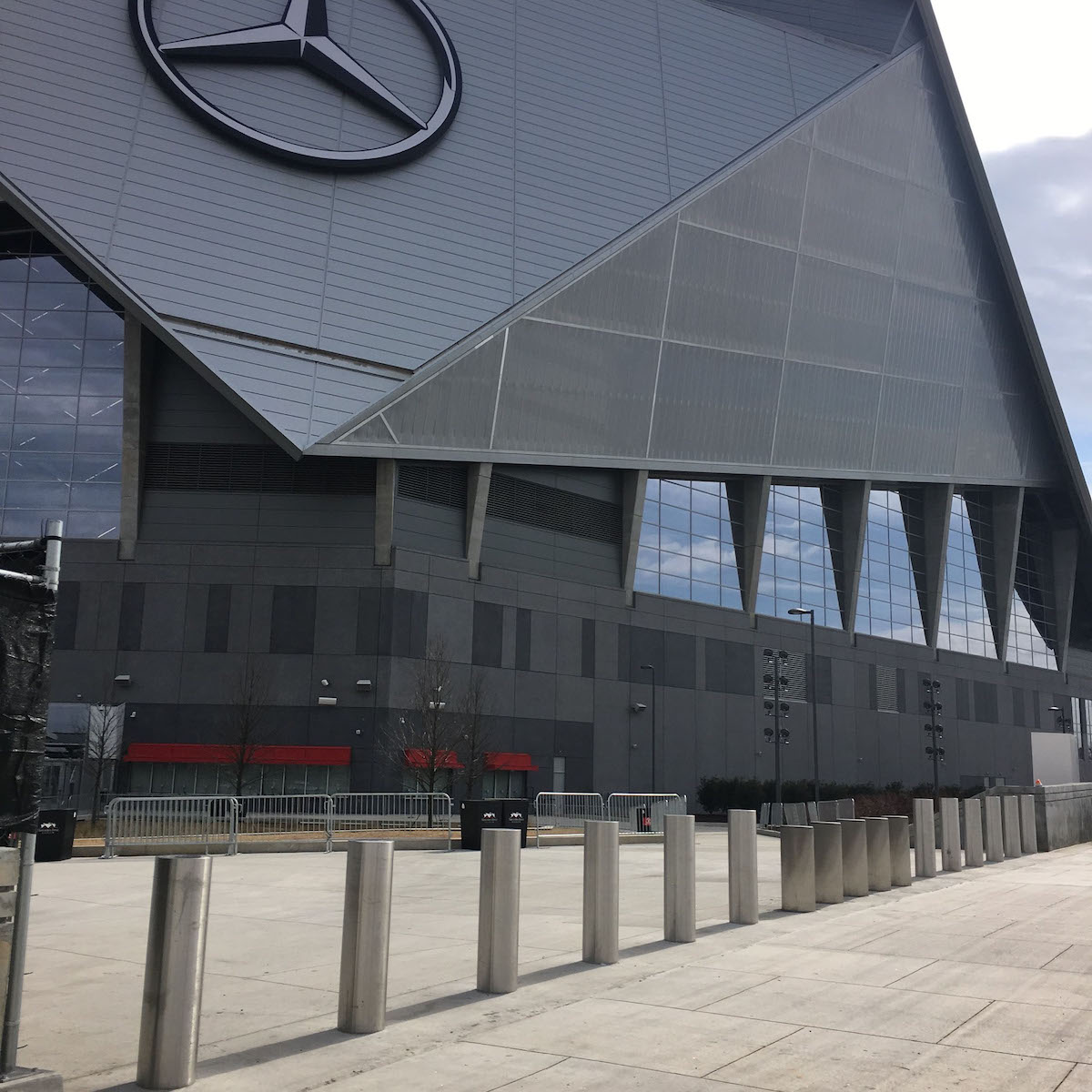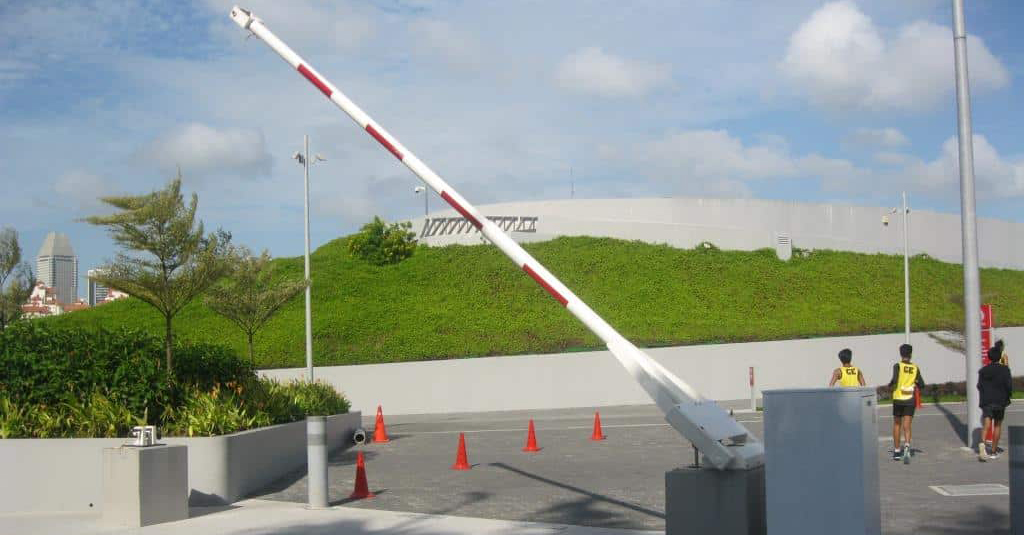Vehicle Barriers for Buildings: Types and Uses
Vehicle barriers for buildings are an excellent tool for improving security around a structure. They can be either permanent or portable, allowing for added flexibility without compromising security. Delta Scientific offers the highest security vehicle barriers on the market.
What are Vehicle Barriers for Buildings?

Vehicle barrier devices are designed to protect individuals from vehicle traffic. They are very popular in locations where lots of children or seniors are present, such as at schools or hospitals. However, you will also find security barriers in other locations, including federal buildings and around private commercial buildings and storefronts.
What are the Different Types of Vehicle Barrier Systems?
Vehicle barriers for buildings and surrounding areas fall into three main categories: active, passive, or hybrid. Each one works differently and one type may be more suitable for certain situations than others.
Active
Active vehicle barriers open and close or raise and lower to allow traffic through. They typically require the driver or on-site personnel to perform a specific action for activation. Some common types include:
- Beam barricades raise overhead, allowing vehicles to pass under them
- Sliding gates seal off an area unless the driver or an operator provides an access code
- Surface-mounted wedge systems are installed at grade to provide a quick and cost-effective barrier
- Wedge barriers lower into the ground to allow traffic to pass
Bollards are usually a passive barrier. However, you can install them so that they raise and lower as needed, making them highly secure active vehicle barriers for buildings.
Passive
Unlike active barriers, passive vehicle barriers are permanent and stationary. A lack of controls can make immobile security devices more useful for protecting buildings than controlling entrances to secure locations.
You may install passive barriers in front of stores, outbuildings, or walking paths to protect them from vehicles crashing into them. They are commonly used around the perimeter of the facilities including parking areas and heavily trafficked public gatherings.
What is the Most Common Barrier for Vehicles?

Bollards are the most common type of permanent vehicle barrier. These are short posts that are installed in the ground at specified intervals to create a barricade between a road or parking lot and a building. Many areas have specific regulations for bollards, but the general requirements are that they are between 36 and 48 inches tall.
Some agencies, including the U.S. Forest Service, use bollards to clearly define areas and discourage vehicular traffic. Bollards can provide the same stopping power as other barrier systems. Other more technologically advanced options of vehicle barriers for buildings may be a better choice for your security barrier needs.
How Does a Beam Barricade Work?
Beam barricades are another type of vehicle barrier for buildings. They consist of a long beam that lowers into the path of traffic. Drivers must take a specific action to move the beam. This forces them to stop and take steps to raise the barricade so they can proceed.
Beam barricades usually come in bright colors and have reflective materials on them to ensure visibility during all conditions. Sometimes, they have signs on them instructing drivers to stop at a certain point.
How Are Vehicle Barriers Made?
Vehicle barriers may be made differently depending on their intended purpose. Generally, companies make barriers to prevent vehicles from entering a space they should not, such as a parking lot or space around a building. Some barriers are designed to keep vehicles from crashing into buildings. The materials, design, and construction must be suitable for the application.
Barriers intended to secure specific areas are generally very robust. Some are strong enough to stop military-grade vehicles. However, most store owners wanting to prevent vehicles from coming through the side of a building do not need something that strong.
Where Are Vehicle Barriers Used

Many types of businesses and organizations rely on vehicle barriers to protect buildings, property boundaries, and pedestrian areas. Military bases and government offices often rely on very robust systems to ensure operational security. However, other businesses, use them to monitor traffic.
Delta’s barricades are also excellent solutions for corporate offices, energy facilities, and warehouses. We can configure our systems for passive or active protection, with both permanent and temporary installations. Our team can help design virtually any type of vehicle barrier you might need.
What Happens if Someone Hits a Barrier?
Hitting a vehicle barrier will cause damage to a vehicle. It will also stop the vehicle from entering a restricted area.
The stronger the barrier, the more damage it will cause. As a result, something like a beam barricade will cause less damage than a wedge barrier. The latter can total a car and injure its occupants.
The American Society for Testing and Materials currently uses the M-system to rate barriers. ASTM F2656/F2656M-20 and ASTM F3016 cover the testing parameters and requirements for vehicle barriers.
Testing produces an M-value and a P-value. The higher the M-value and lower the P-value, the more protection the barricade will offer, with M50 and P1 being the most protection. Delta’s bollard product line ranges from M30 to M50 for maximum security.
Increase Site Security With Vehicle Barriers for Buildings
Vehicle barriers for buildings are a great way to protect your building or secure a parking lot or other area. At Delta Scientific, we have over 50 years of experience designing and manufacturing effective vehicle access control systems for a wide range of industries. We have active, passive, and hybrid barrier systems to help secure your location. Request a quote to find the right barriers to increase your site secur
Share This Story, Choose Your Platform!
